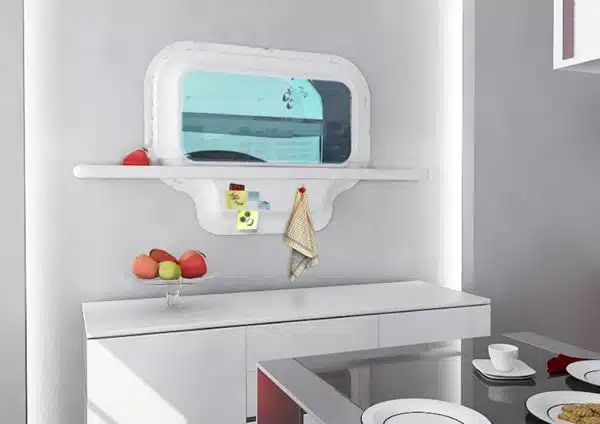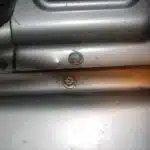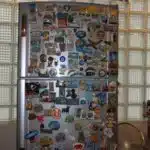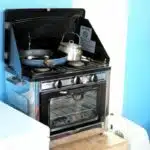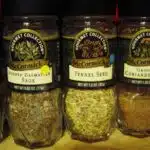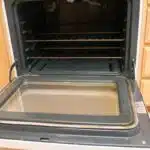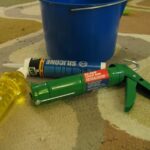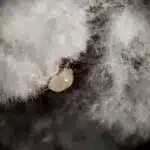As a refrigerator cleaning expert, I have seen my fair share of messy and neglected refrigerators. A cluttered fridge not only makes it difficult to find what you need but can also lead to food spoilage and unpleasant odors. However, with the right tools and techniques, cleaning out your refrigerator doesn’t have to be a daunting task.
In this article, we will discuss the essential steps for effectively cleaning out your refrigerator. From removing all items to wiping down shelves and drawers, we will guide you through the process of creating a clean and organized fridge that will make meal prep a breeze. So whether you’re looking to freshen up your fridge or prepare for a big grocery haul, read on for our expert tips on how to clean out a refrigerator.
Gather Supplies
As a refrigerator cleaning expert, I have seen my fair share of dirty fridges. Before starting the cleaning process, it is important to gather all necessary supplies. This will save time and ensure that the job is done efficiently. The supplies needed include: rubber gloves, a bucket, dish soap, vinegar or baking soda, a clean sponge or cloth, and trash bags.
Rubber gloves are essential in protecting your hands from harmful chemicals and bacteria that may be present in the fridge. A bucket is useful for holding water and cleaning solution while washing the shelves and drawers. Dish soap can be used to remove any food stains or residue on surfaces. Vinegar or baking soda are natural cleaners that can effectively eliminate odors in the fridge.
These supplies can easily be found at your local grocery store or hardware store. However, it is important to check labels and purchase products that are safe for use around food. Once these supplies are gathered, you can move on to removing all items from the fridge to start the cleaning process.
Remove All Items From Fridge
The first step in cleaning out a refrigerator is to remove all items from the fridge. This includes any food, drinks, condiments, and other items that may be stored inside. It’s important to take this step before beginning the actual cleaning process to ensure that all areas of the fridge are thoroughly cleaned.
Organizing strategies can be helpful during this step to make the process more efficient. One strategy is to work in sections, such as removing all items from one shelf at a time. Another strategy is to sort items into categories, such as fruits and vegetables, dairy products, and meats. By doing this, it will be easier to see what needs to be kept and what can be discarded.
When removing items from the fridge, it’s important to keep food safety tips in mind. Check expiration dates on all products and discard anything that has expired or looks questionable. Additionally, make sure that any raw meat or seafood is stored in leak-proof containers and placed on the bottom shelf of the fridge to prevent cross-contamination with other foods.
Next up: sort items into keep, toss, and donate piles…
Sort Items Into Keep, Toss, And Donate Piles
After removing all the items from your refrigerator, it’s time to sort them into keep, toss, and donate piles. Organizing techniques can help you declutter your fridge and make more space for fresh food. First, check the expiration dates on all items before deciding which ones to keep or toss. Any expired or spoiled items should be discarded immediately.
Next, create a table with four rows and two columns to help sort the remaining items. In one column, list the item’s name and in the other column, write whether it should be kept, tossed, or donated. Consider donating non-perishable foods that are still within their expiration date but are unlikely to be used in your household. Donation options include local food banks or shelters that accept donations of canned goods and other non-perishable items.
By following these organizing techniques, you’ll have a better idea of what needs to stay and what needs to go in your refrigerator. Don’t forget to properly dispose of any expired or spoiled items before restocking your fridge with fresh groceries. In the next section, we will discuss how to discard expired or spoiled items without causing harm to yourself or the environment.
Discard Expired Or Spoiled Items
As you begin the task of cleaning out your refrigerator, it is essential to check the expiration dates of all items. This step will help you identify the products that should be discarded immediately. It’s crucial to note that some items may seem fine, even if their expiration date has passed. However, consuming such products can lead to food poisoning or other illnesses.
Once you’ve checked the expiration dates, it’s time to identify spoiled items. Spoiled food can produce an unpleasant odor and can also cause mold growth in your fridge. Look for signs like discoloration on fruits or vegetables, a sour smell from dairy products, or slimy texture on meat or poultry. If any item falls in this category, dispose of them immediately.
It’s important to remember that expired and spoiled items can contaminate other foods in your fridge. Therefore, it’s always better to err on the side of caution and discard them as soon as possible. Once you have removed all these items from your refrigerator, move on to cleaning out shelves and drawers – we’ll cover that next!
Clean Shelves And Drawers
After discarding expired or spoiled items, it is time to clean the shelves and drawers of your refrigerator. Proper organization is key to keeping your fridge clean in the long term. Consider investing in some clear plastic containers to house your food items and prevent spills from occurring. When spills do happen, wipe them up immediately with a damp cloth.
Before cleaning the shelves and drawers, remove them from the refrigerator and wash them separately in warm soapy water. Be sure to rinse them thoroughly and dry completely before placing them back into the fridge. For tough stains, make a paste using baking soda and water and apply it directly to the stain. Allow it to sit for a few minutes before wiping away with a damp cloth.
Preventing spills is crucial in maintaining a clean refrigerator. Labeling your food items can help you keep track of when they were opened or prepared, reducing the likelihood of forgotten leftovers going bad and causing spills. Additionally, store liquids like sauces or dressings in sealable containers instead of their original packaging. By taking these precautions, you can drastically reduce messes inside your fridge and make cleaning a breeze.
To tackle tough stains on the interior walls of your refrigerator, use warm soapy water combined with baking soda or vinegar as an effective solution. Avoid using abrasive sponges or cleaners that may damage the surface of your fridge. With proper organization and regular maintenance, cleaning out your refrigerator will become second nature, keeping both your food fresh and your appliance sparkling clean.
Use Warm Soapy Water For Tough Stains
Picture this: you have finally finished cleaning out the fridge, but there are some stubborn stains that just won’t go away. Don’t worry; warm soapy water can help with those tough stains. This technique will ensure that your refrigerator is clean and hygienic, making it safer for you and your family to use.
To begin with, prepare a bowl of warm water mixed with soap. Dip a clean cloth into the mixture and wring out any excess water. Gently scrub the affected area until the stain disappears. For tougher stains, allow the soapy water to soak on the surface for a few minutes before scrubbing again.
If you’re looking for an alternative solution to remove stubborn stains from your fridge, consider using vinegar. Vinegar is an excellent natural cleaner that can cut through grime and grease effectively. It also has antibacterial properties that make it ideal for cleaning food storage areas like refrigerators.
Some tips for removing stubborn stains include using a baking soda paste to scrub away hard-to-remove spots or investing in specialized cleaners designed specifically for cleaning refrigerators. Remember to always follow manufacturer instructions when using specialized cleaners to avoid damaging your appliance.
Don’t forget about the door shelves! These areas often get overlooked during routine cleaning but can harbor bacteria and unpleasant smells if left uncleaned. Use warm soapy water or vinegar solution to clean these areas thoroughly, ensuring that all surfaces are disinfected and free of debris. Your fridge will thank you!
Don’t Forget The Door Shelves
When cleaning out your refrigerator, it is important not to forget the door shelves. These shelves are often overlooked but can harbor a lot of bacteria and food debris. To ensure that your fridge is thoroughly clean, take some time to organize the door shelves and maximize the space available.
Door shelf organization can be a daunting task, but with a little planning, it can be done easily. Start by removing all items from the shelves and discarding any expired or spoiled products. Next, group similar items together, such as condiments or beverages. Consider using clear bins or containers to keep items organized and easily visible. This will also help you to maximize space on the shelves and avoid overcrowding.
Maximizing space on your fridge door shelves is essential for efficient storage. A good way to do this is by utilizing vertical space with stackable containers or by installing additional racks if possible. Another tip is to store taller items in the bottom shelf compartments while shorter items can go in the top compartments. By following these tips, you will not only have a cleaner fridge but also a more organized one that maximizes space for all your food storage needs.
Transition: Now that we have covered how to tackle organizing the door shelves of your refrigerator, it’s time to move onto cleaning the exterior of your fridge.
Clean The Exterior Of The Fridge
After cleaning the door shelves, it’s time to move on to the exterior of the fridge. Start by unplugging the unit and removing any loose items from the top of the fridge. Then, use a soft cloth or sponge with warm soapy water to wipe down the outside surface of the fridge. Be sure to clean any handles, buttons, and other surfaces that are frequently touched.
For tough stains or grime buildup, DIY cleaning solutions can be effective. A mixture of baking soda and water can be used for stubborn stains on stainless steel surfaces. For plastic surfaces, a solution of vinegar and water can be used to remove grime buildup. Always test these solutions in an inconspicuous area first before applying them to larger areas.
In addition to cleaning, organizing tips can also help keep your fridge clean and clutter-free in the future. Consider using clear containers or bins for smaller items like condiments or snack packs. Labeling these containers can also help you quickly find what you need without digging through cluttered shelves. By following these steps and implementing organizational techniques, you’ll have a clean and organized fridge in no time.
To continue with your refrigerator cleaning process, it’s important to wipe down the gaskets around the doors regularly. These rubber seals are responsible for keeping cool air inside your fridge but they can also accumulate dirt and grime over time which may lead to bad odor or even mold growth if left unattended. Using a damp cloth with warm soapy water is enough for regular maintenance but for tough stains or sticky residue, you may use baking soda paste or vinegar solution as mentioned earlier in this guide.
Wipe Down The Gaskets
Gaskets are an important component of a refrigerator that helps to maintain the temperature inside. It is essential to clean gaskets regularly as it prevents the growth of mold and mildew. The cleaning process is simple, and you only need a few tools to get started.
Benefits of Gasket Cleaning:
- Prevents the buildup of bacteria and mold: When gaskets are not cleaned properly, they tend to accumulate moisture that leads to the development of bacteria, mildew, and mold. These microorganisms can affect your health and make your food taste bad.
- Saves energy: A dirty gasket can cause your refrigerator to work harder than it should be, resulting in higher energy bills. By keeping your gaskets clean, you can ensure that your fridge works efficiently.
- Prolongs lifespan: Regular cleaning of gaskets ensures that they remain in excellent condition, enhancing their functionality and longevity.
Tools for Gasket Maintenance:
- Soft-bristled brush or toothbrush
- Mild detergent or vinegar solution
- Clean cloth
To clean gaskets effectively, use a soft-bristled brush or toothbrush with a mild detergent or vinegar solution. Scrub gently along the grooves of the gasket until all dirt and debris are removed. Then, wipe down the area with a clean cloth until dry.
Now that you have learned about how to clean and maintain your refrigerator’s gaskets let’s move on to another essential component – cleaning condenser coils.
Clean The Condenser Coils
- The condenser coils of a refrigerator can be located at the back or underneath the unit.
- Before cleaning the coils, turn off the refrigerator and unplug it from the electrical socket.
- To clean the coils, use a vacuum cleaner or brush to remove dust and dirt buildup.
- For optimal results, cleaning the coils every six months is recommended to ensure that the refrigerator runs efficiently.
Locating Coils
When it comes to maintaining the cleanliness of your refrigerator, one crucial aspect that is often overlooked is the condenser coils. These coils are responsible for releasing heat from the fridge and ensuring that it stays cool. Neglecting them can lead to a decrease in efficiency and increased energy costs. Therefore, as a refrigerator cleaning expert, I highly recommend locating the coils and incorporating it into your maintenance routine.
Locating the coils might seem like a daunting task, but it’s quite simple. First, unplug your fridge and locate the back of the unit. You’ll see a panel covering the coils, which may be at the bottom or top of the fridge. Depending on your model, you may need to remove screws or snap off clips before accessing them. Once you’ve exposed them, use a soft-bristled brush or vacuum with an attachment to gently remove any dust or debris.
Common issues that arise when neglecting these coils include overheating and compressor failure. Dust buildup can cause these parts to work harder than they need to, leading to wear and tear over time. Additionally, dirty coils can cause your fridge to run longer than necessary, resulting in higher energy bills. By simply locating and cleaning them regularly, you can avoid these issues altogether.
In conclusion, as a refrigerator cleaning expert who has seen firsthand what happens when coils are neglected, I cannot stress enough how essential it is to incorporate this step into your maintenance routine. Locating them might seem intimidating at first, but it’s a straightforward process that will save you money in energy costs and prevent costly repairs down the line. Don’t wait until there’s an issue – take action now and keep those coils clean!
Cleaning Coils
As a refrigerator cleaning expert, I want to emphasize the importance of regular coil cleaning. One common debate among homeowners is whether to clean the coils themselves or hire a professional. While it’s possible to do it yourself, it’s essential to be careful not to damage the coils in the process. If you’re unsure about your abilities, it’s best to leave it to the professionals.
Cleaning coils regularly is crucial for maintaining the efficiency of your fridge and preventing costly repairs down the line. Neglecting them can lead to dirt buildup, which makes the compressor work harder than necessary, resulting in increased energy costs. In addition, if left uncleaned for an extended period, dust and debris can cause permanent damage to the coils and other components.
Therefore, as a refrigerator cleaning expert who has seen firsthand what happens when coils are left uncleaned, I highly recommend incorporating this step into your maintenance routine. Regular coil cleaning will ensure that your fridge runs smoothly and efficiently while extending its lifespan. Whether you choose to do-it-yourself or hire a professional, take action now and keep those coils clean!
Reorganize Fridge Contents
Although cleaning the condenser coils is an important step in maintaining a refrigerator, it is just one part of the process. To fully clean out a refrigerator, you must also reorganize its contents and plan ahead for future use. Meal planning and fridge layout are key components to keeping a clean and organized refrigerator.
Reorganizing the contents of your refrigerator can seem like a daunting task, but it is essential for maintaining a clean and healthy environment. Start by emptying everything out and discarding any expired or spoiled items. Next, group similar items together and place them in designated areas of the fridge. Use a two column table to map out where each item should go based on temperature requirements and frequency of use.
Meal planning goes hand in hand with reorganizing your fridge. By planning ahead, you can ensure that you are using all of your ingredients before they expire and minimize food waste. Consider labeling containers with their expiration dates or creating a meal plan for the week based on what you already have in your fridge. With these simple strategies, you can not only keep your fridge clean but also save time and money in the long run.
To maintain an organized refrigerator, label items and shelves to make it easier to put things back where they belong after use. This will help prevent clutter from accumulating over time, making cleaning less overwhelming in the future. With consistent upkeep, cleaning out your refrigerator will become less of a chore and more of a habit that keeps both your food fresh and your space tidy.
Label Items And Shelves
Once you have removed all items from your refrigerator and thoroughly cleaned its interior, it is important to label the shelves and items. Labeling helps to identify what products are stored where, making it easier for you to locate them. It also prevents confusion or mix-ups when multiple people are using the refrigerator.
Organizing tips:
- Use clear labels that are easy to read.
- Place labels on both the front and back of shelves so they can be easily seen regardless of how full the fridge is.
- Group similar items together in designated areas, such as condiments on one shelf and fruits and vegetables on another.
Cleaning products:
- Use a mixture of warm water and mild soap to clean the inside of your refrigerator.
- Avoid using harsh chemicals or bleach as they can leave behind harmful residues.
- Consider using natural cleaning products such as vinegar or baking soda for a more eco-friendly option.
Labeling items and shelves in your refrigerator may seem like a small task, but it can make a big difference in keeping your fridge organized and efficient. By grouping similar items together in designated areas, you will not only save time locating what you need but also maximize space within your fridge.
Transition: Now that your shelves are labeled, let’s explore how using fridge organizers can help maximize space even further.
Use Fridge Organizers To Maximize Space
After labeling items and shelves in your refrigerator, you may feel like you’ve conquered the world – but there’s still more work to be done. Maximizing storage is key to keeping a clean and organized fridge. One way to achieve this is through the use of fridge organizers.
There are many types of fridge organizers available on the market, ranging from simple plastic bins to complex drawer systems. The type you choose will depend on your personal needs and the layout of your fridge. For example, if you have narrow shelves, a slimline organizer may be best for maximizing space. Alternatively, if you have a lot of small items that tend to get lost in larger bins, consider using compartmentalized organizers.
Another popular option for maximizing space is the lazy Susan organizer. These rotating trays can be used for condiments, jars, or even leftovers that need to be easily accessible. By making use of vertical space and ensuring everything has its place, you’ll be able to fit more into your fridge while also making it easier to find what you’re looking for.
Regularly cleaning and checking for expired foods is crucial for maintaining a clean and safe refrigerator. Even with the most efficient storage methods in place, clutter can still accumulate over time. Set aside time every week or two to go through your fridge and dispose of any expired or spoiled items. Not only will this help keep things organized, but it will also ensure that you’re not consuming anything past its prime.
Incorporating various types of fridge organizers can help maximize storage space and make finding items easier. However, regular cleaning and checking for expired foods are equally important steps in keeping a clean and safe refrigerator. By following these tips, you’ll be well on your way to having an efficiently organized fridge that serves all your needs.
Regularly Clean And Check For Expired Foods
- In order to properly clean and check for expired foods, it is important to wipe down the shelves of the refrigerator with an appropriate cleaning solution.
- Regularly checking expiration dates on all products ensures that potential expired items are identified and removed.
- Spoiled foods should be discarded immediately to reduce any potential health risks associated with consuming them.
- Properly cleaning the refrigerator also helps to prevent the spread of bacteria and other contaminants.
- It is recommended to discard any expired items, even if the food appears to be safe for consumption.
- Sanitizing the interior of the refrigerator is an important step in regularly cleaning and checking for expired foods.
Wipe Down Shelves
As a refrigerator cleaning expert, it is important to regularly wipe down the shelves of your refrigerator. Doing so can help prevent the buildup of grime and bacteria that can contaminate your food. Not only does this help keep your fridge looking clean and organized, but it also helps ensure that your food stays fresh and safe to eat.
When wiping down the shelves of your refrigerator, there are a few useful tools that you should have on hand. A microfiber cloth or sponge is great for removing spills and stains without leaving behind any residue or lint. Additionally, using a cleaning solution that is specifically designed for use in refrigerators can help ensure that you are using a safe and effective product.
To begin cleaning the shelves of your refrigerator, start by removing all items from the shelf. This will allow you to see any spills or stains that may need extra attention. Next, use a damp cloth or sponge to wipe down the entire surface of the shelf. If there are any particularly stubborn stains, you may need to use a bit of elbow grease to remove them. Once the shelf is clean, dry it thoroughly before replacing any items.
By regularly wiping down the shelves of your refrigerator, you can help keep it clean and organized while also ensuring that your food stays fresh and safe to eat. With useful tools like microfiber cloths and cleaning solutions designed for use in refrigerators, this task can be completed quickly and easily. So next time you’re doing some spring cleaning, don’t forget to give your fridge some love!
Check Expiration Dates
As a refrigerator cleaning expert, it is important to not only keep the shelves of your refrigerator clean but also to check for expired foods. Checking food labels and discarding old items can help prevent foodborne illnesses and ensure that your food stays fresh and safe to eat.
To begin checking for expired foods in your refrigerator, start by taking out all items and checking their expiration dates. Any items that have expired or are close to expiring should be discarded. It’s important to pay attention to any warning labels such as “use by” or “best before” dates, which indicate when the quality of the product may start to deteriorate.
Checking for expired foods should be done regularly, ideally at least once a week. This simple task can go a long way in preventing food waste and keeping you and your family healthy. By incorporating this step into your regular cleaning routine, you can ensure that your refrigerator is not only clean but also stocked with fresh and safe-to-eat foods.
Discard Spoiled Foods
Regularly cleaning and checking for expired foods in your refrigerator is an essential step in maintaining a healthy and safe home environment. In addition to checking expiry dates, it’s crucial to discard spoiled foods promptly. Spoiled food can harbor harmful bacteria that can lead to foodborne illnesses, resulting in severe health issues.
Preventing spoilage is one of the most critical food safety tips that every homeowner should follow. Spoiled foods emit an unpleasant odor, change color and texture, and may even develop mold or fungus. Discarding these items is necessary to prevent cross-contamination of other foods in your refrigerator. Moreover, using leftovers creatively can help reduce waste and save money while providing nutritious meals for you and your family.
When discarding spoiled foods, it’s important to do so immediately after identifying them. Don’t wait until the next scheduled cleaning day; instead, take action as soon as possible to maintain a clean and safe environment for your family. Furthermore, you can use creative recipes to repurpose leftover foods into new dishes that are both delicious and nutritious. Such practices not only help reduce waste but also promote healthy eating habits for everyone in the household.
Enjoy A Fresh And Organized Fridge
To maintain a clean and organized fridge, it is important to establish a routine for cleaning and maintenance. This will not only ensure that your food stays fresh but also prevent future clutter. Start by removing all the contents from the fridge, and discard any expired or spoiled items. Use warm soapy water to wipe down the interiors of the fridge, including shelves, drawers, and walls.
One of the most crucial tips for maintenance is to keep your fridge organized. Group similar items together, such as dairy products and condiments. This will help you easily locate what you need and prevent overcrowding in specific areas of the fridge. Additionally, consider investing in clear containers to store small items like fruits and vegetables. Labeling them will not only make it easier for you to find what you need but also keep track of expiration dates.
Preventing future clutter in your fridge starts with smarter shopping habits. Before heading out on a grocery trip, take inventory of what you already have in your fridge. Make a list of items that need restocking and stick to it while shopping. Once home, organize your new groceries according to their designated areas in the fridge. By doing this regularly, you’ll reduce food waste and save money on unnecessary purchases.
- Regularly check expiration dates before storing food in the fridge
- Use clear containers with labels to store small items like fruits and vegetables
- Keep an inventory list before grocery shopping – and stick to it to avoid buying items you already have at home.
Conclusion
Maintaining a clean and organized refrigerator is crucial for food safety and efficiency. According to a study conducted by the USDA, Americans waste nearly 30% of their food annually, which equals to approximately $161 billion worth of discarded food each year. A poorly managed fridge can contribute to this problem as expired or forgotten items often go unnoticed.
To prevent waste and ensure optimal fridge performance, it is important to regularly clean and organize your refrigerator. Begin by gathering supplies such as cleaning solution, gloves, and sponge. Remove all items from the fridge and sort them into keep, toss, and donate piles. Discard any expired or spoiled items before cleaning shelves and drawers thoroughly.
Labeling items and shelves can help with organization while using fridge organizers can maximize space utilization. It is important to regularly check for expired foods in order to maintain a fresh and safe environment for your stored goods. With these tips in mind, you can enjoy a fresh and organized refrigerator that not only saves you money but also contributes towards reducing food waste on a larger scale.
Image Credits
- “Electrolux Design Lab – The Window Fridge – Cool view with inside-out refrigeration” by Electrolux Design Lab (featured)

